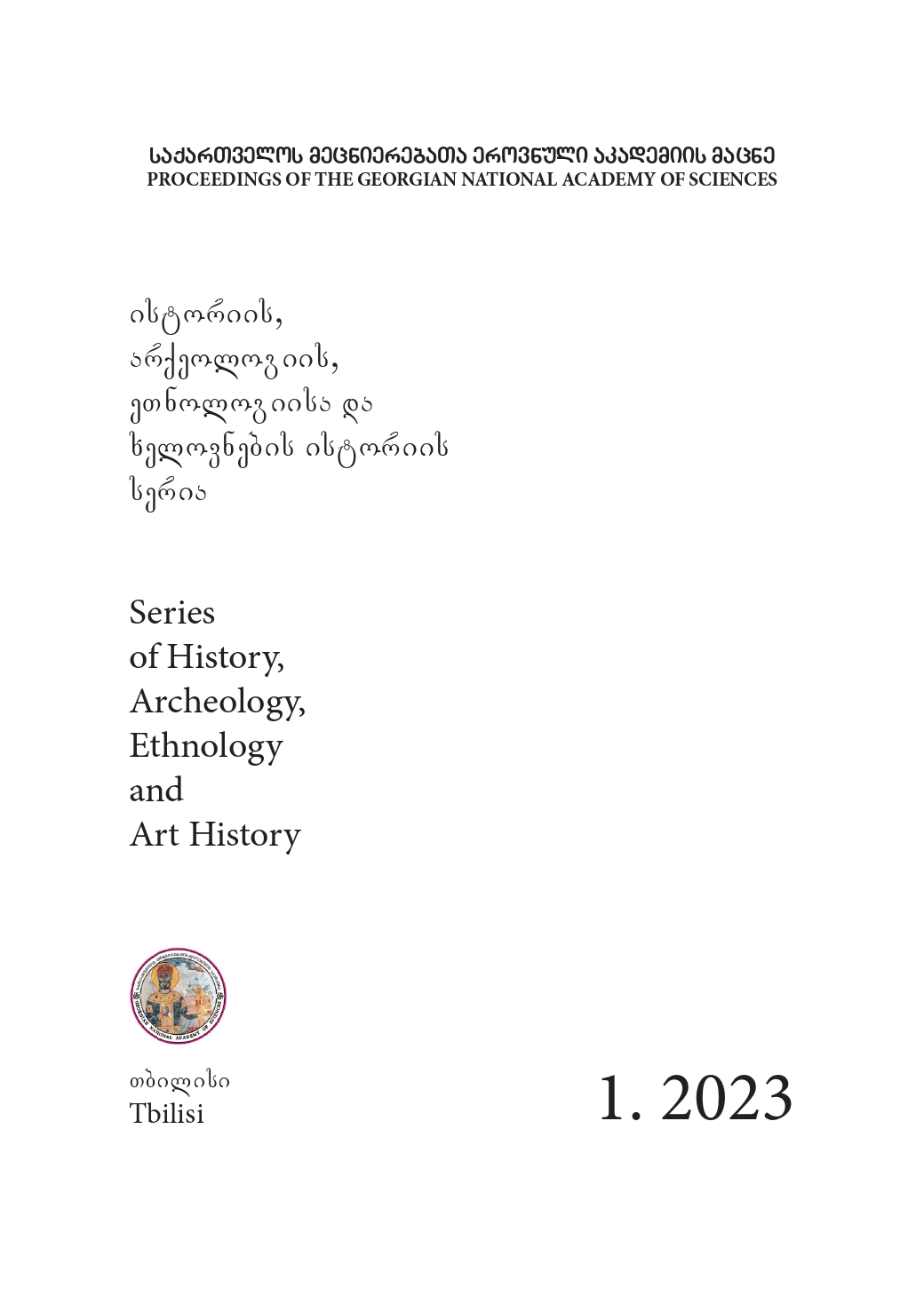ვარდანისძეთა წარჩინებული გვარის უცნობი გამოსახულებები ჯუმათის მთავარანგელოზთა მონასტრის XIV საუკუნის მოხატულობაში
UNKNOWN IMAGES OF THE NOBLE FAMILY OF VARDANISDZE IN THE 14TH CENTURY MURALS OF JUMATI ARCHANGELS MONASTERY
Author(s): Nino ChikhladzeSubject(s): History, Cultural history, Visual Arts, Political history, Middle Ages, Special Historiographies:
Published by: საქართველოს მეცნიერებათა ეროვნული აკადემიის გამომცემლობა
Keywords: Jumati Archangels Monastery; Medieval Georgian wall paintings; portraits of historical persons; Vardanisdze-Gurieli;
Summary/Abstract: The present paper discusses the issues of establishing the Vardanisdze family, a powerful feudal family of medieval Georgia, in Guria and therefore obtaining the status of Gurieli in the light of the portraits identified in the wall paintings of the Jumati Monastery. Representatives of this strong feudal family were Eristavs (princes) of the Svaneti principality from the 10th-11th centuries to the beginning of the 14th century. According to Vakhushti Batonishvili’s information the Vardanisdze family was deprived of the Svaneti principality and Guria was given to rule in 1361, However, historians have a well-founded opinion regarding the transfer of the date to the first half of the 14th century. Based on the artistic style analysis, the Jumati Archangels Monastery wall painting in Guria reveals the artistic peculiarities of the same period. In this mural decoration the memorial portrait of the proud ancestor of Vardanisdze family Vardanisdze Vardan “Didi” (the Great) was identified during the expedition of the University of Georgia Tamaz Beradze Institute of Georgian Studies in 2022.In the first half of the 14th century, the initiator of the depiction of the ancestor’s portrait obviously was, Eristavi (prince) of Guria from the Vardanisdze family, who would probably be depicted on the north wall of the church near the sanctuary. Unfortunately, the wall decoration was destroyed by the church’s later wall painting and architectural remodeling. However, in the western part of the northern wall, on the layer of painting of the first half of the 14th century, the image of a strange couple of a monk and a nun has been preserved. The Composition, in which the couple is blessed by the Savior, represents the privilege of the first persons of the royal family or local rulers. Therefore, according to the fragment of the woman’s inscription, the monk, and the nun, who are former spouses, may have been Gurielis (rulers of Guria principality), and the initiator of their depiction together would probably be their own son. The son, who commissioned Jumati wall painting is probably Beshken Gurieli. He and his son, Mikeli is mentioned in the later inscription of the11th century famous St. George icon of Jumati. Father,who is depicted as a monk, may be Eristavt Eristavi of Svaneti, Msakhurtukhutsesi Suimon Gurieli, whose portrait was involved in the 14th century mural painting of Zarzma Church. Most likely, he must be the first Vardanisdze, who received status of Gurieli after the loss of the Svaneti principality. This should have happened be- tween the end of the 13th century and the beginning of the 14th century.In 2016, in the Erketi Monastery of Archangels, located in Guria, 12th-13th century fragmentary inscription of an old chancel-barrier slab was found. In it, the name of Eristavt Eristavi of Svaneti Mikeli was read, who is probably the donor of the monastery and therefore the governor of Guria. Thus, it is conceivable that Mikeli should be the secular name of above mentioned Eristavt Eristavi of Svaneti, Msakhurtukhutsesi Suimon Gurieli. This opinion is indirectly supported by the fact that his possible grandson was also named Mikeli. Thus, it turns out that the first Gurielis of the Vardanisdze family who moved from Svaneti to Guria at the end of 13th century and the first half of the 14th century can be named in the following order: Mikel formerly Suimoni, Beshkeni, Mikeli.
- Issue Year: 2023
- Issue No: 1
- Page Range: 41-63
- Page Count: 23
- Language: Georgian

